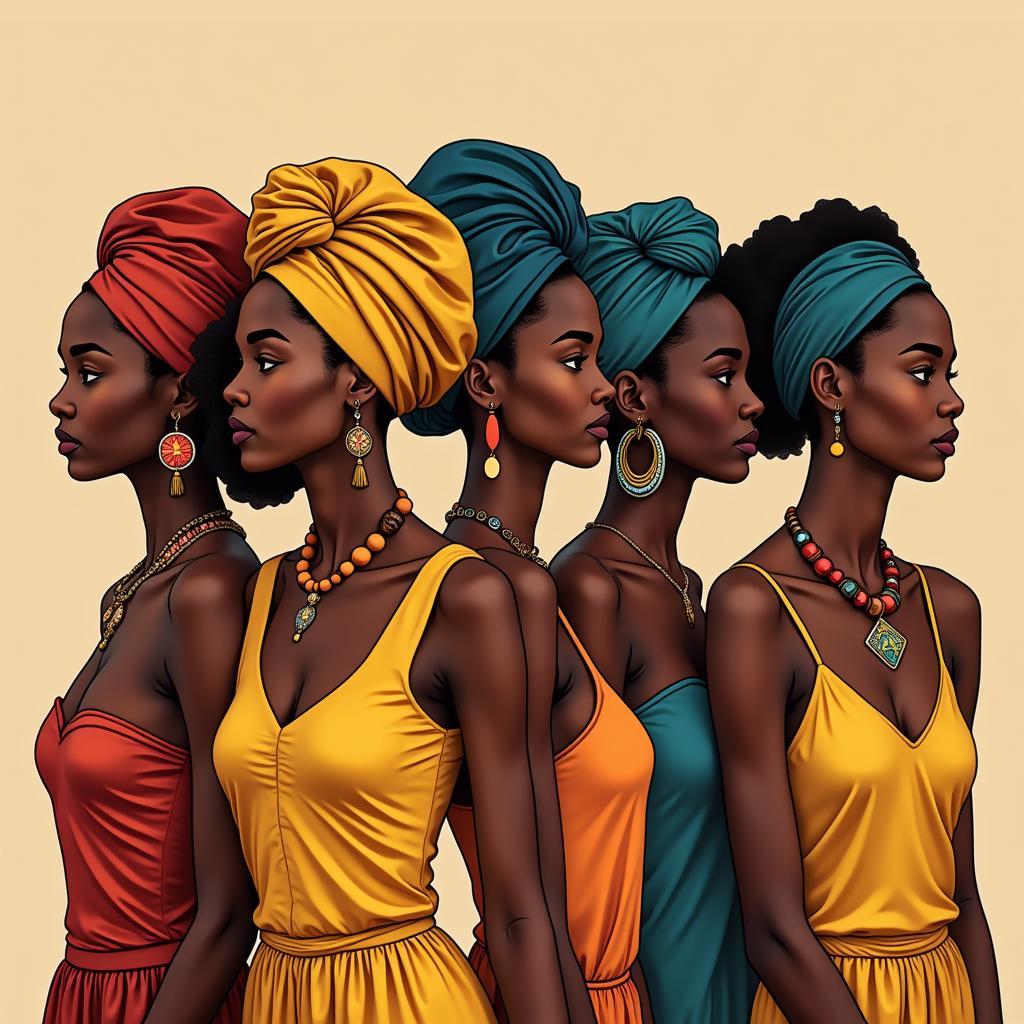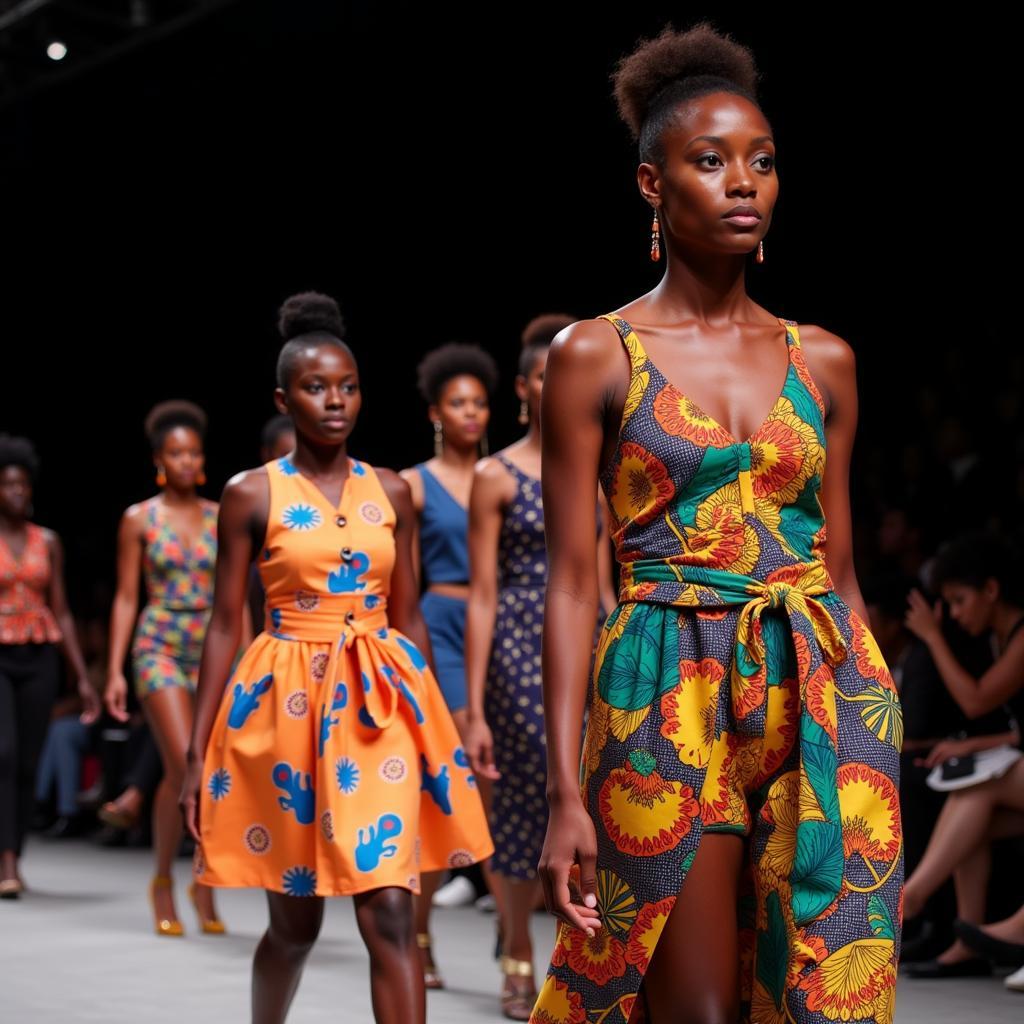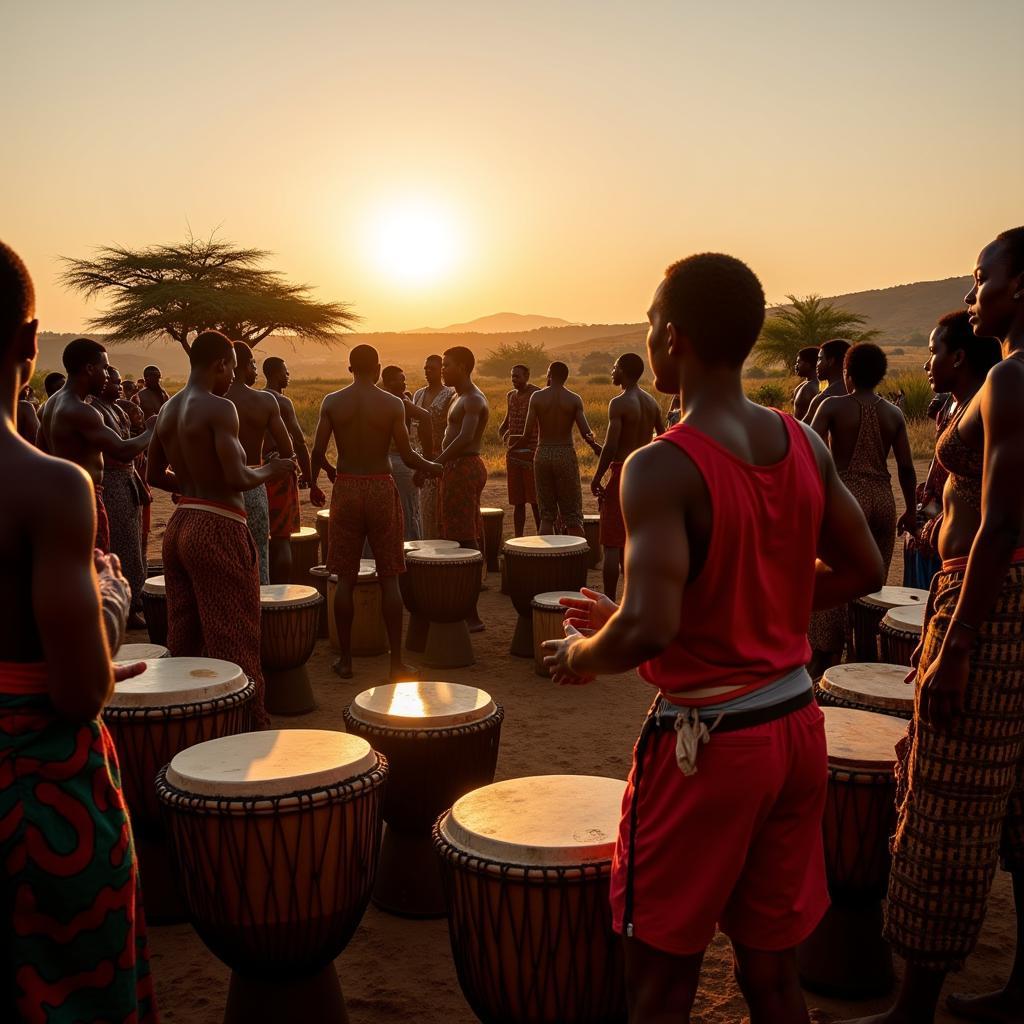African Ladies with Turbans: A Celebration of Culture, Style, and Identity
African Ladies With Turbans are a common sight across the continent, a testament to the rich history and diverse cultures that thrive in Africa. The simple act of wrapping a piece of fabric around one’s head transcends mere fashion; it’s a powerful statement of identity, faith, and style. From the vibrant kente cloth turbans of Ghana to the elegantly draped gele headwraps of Nigeria, each style tells a story, reflecting the unique heritage of the women who wear them.
 African Ladies Showcasing Diverse Turban Styles
African Ladies Showcasing Diverse Turban Styles
More Than Just Fabric: The Significance of Turbans in Africa
While often seen as a fashion accessory in the West, turbans in Africa hold deep cultural and social significance. For centuries, they have been worn for a myriad of reasons, each adding a layer of meaning to this seemingly simple garment.
A Symbol of Faith and Modesty
In many African cultures, the turban is intrinsically linked to faith. Muslim women across the continent wear turbans, known as hijabs, as a symbol of modesty and religious devotion. The style and color of the hijab can often indicate a woman’s region or cultural background. Similarly, in some Christian communities, women wear head coverings, including turbans, as a sign of respect during religious services.
A Mark of Status and Elegance
Beyond their religious connotations, turbans in Africa are also a powerful indicator of social standing and marital status. In some cultures, elaborate turbans are worn by women of high social rank or royalty, signifying their status and influence. For example, the gele headwrap in Nigeria is often adorned with intricate designs and embellishments, reflecting the wearer’s social standing and personal style.
Similarly, the way a turban is tied can convey marital status. In some communities, married women may wear their turbans differently than unmarried women, using the style of their headwrap to communicate their status within the community.
A Practical and Versatile Garment
Beyond their cultural and social significance, turbans in Africa are also incredibly practical. The hot climate makes head coverings essential for protection from the sun, and turbans, made from breathable fabrics like cotton, provide welcome shade and comfort.
Furthermore, turbans are incredibly versatile. They can be styled in countless ways, reflecting the wearer’s creativity and personal flair. From casual everyday looks to elaborate styles for special occasions, the possibilities are endless.
African Turbans: A Celebration of Diversity
The beauty of African turbans lies in their diversity. Each region boasts its unique styles and traditions, making them a fascinating reflection of the continent’s rich cultural tapestry. For example:
-
The Gele in Nigeria: Known for their grand size and elaborate designs, geles are often crafted from brightly colored fabrics like aso-oke and are a staple at weddings and other special occasions.
-
The Kente Cloth Turban in Ghana: Reflecting the vibrant kente cloth tradition, these turbans feature intricate geometric patterns and bold colors, showcasing the weaving skills and cultural heritage of Ghana.
-
The Tuareg Tagelmust in North Africa: Worn by Tuareg men, the tagelmust is a long, indigo-dyed turban that offers protection from the harsh desert sun and sand. It’s a symbol of Tuareg identity and resilience.
These are just a few examples of the diverse world of African turbans. Each style holds its own unique story, reflecting the history, beliefs, and creativity of the communities they represent.
Exploring the World of African Ladies with Turbans
If you’re interested in learning more about African fashion and culture, be sure to check out our other articles on African American hats and African dresses for older ladies. These resources offer a deeper dive into the rich sartorial traditions of Africa and the African diaspora.
From the intricate designs to the cultural significance, African ladies with turbans are a testament to the beauty, resilience, and creativity of African culture. Their turbans are not merely accessories but powerful symbols of identity, faith, and style, reflecting the unique stories of the women who wear them.



